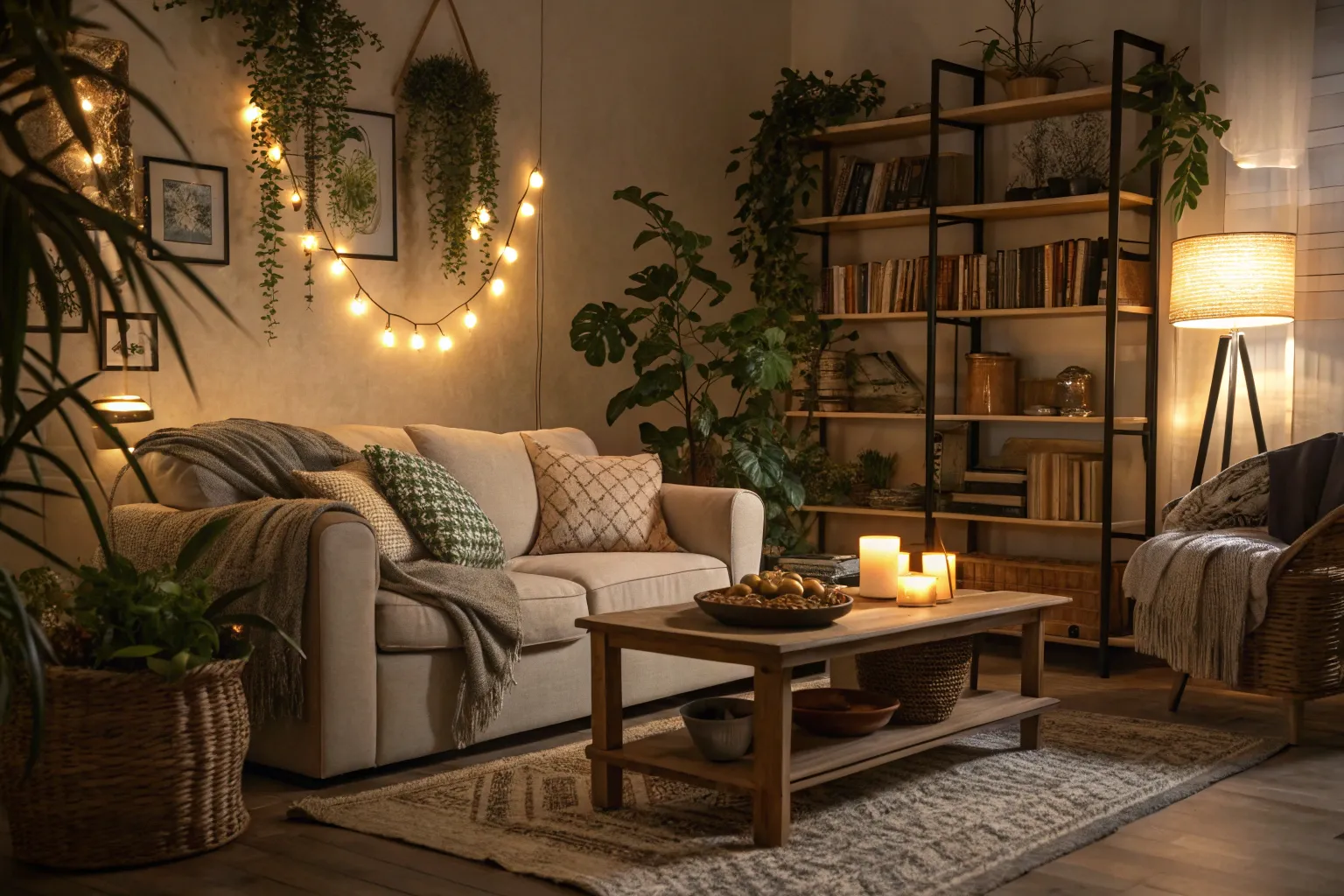Creating a beautifully scented home goes far beyond simply lighting a candle or plugging in an air freshener. As an interior design professional, I’ve learned that fragrance layering is one of the most sophisticated and impactful ways to transform a living space, engaging our most primal sense to create emotional depth and lasting memories.
Understanding the Foundation of Scent Styling
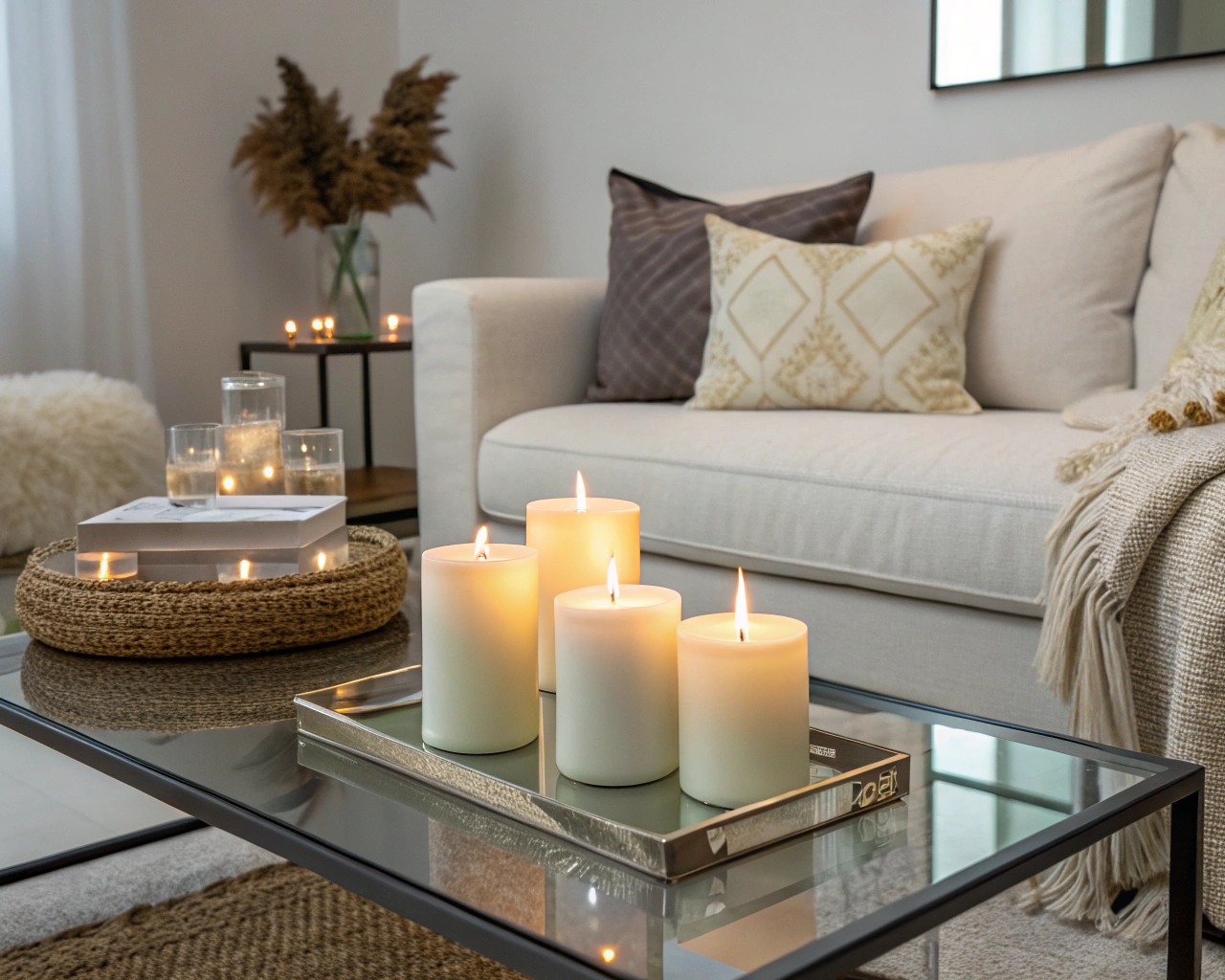
The Science Behind Scent Design
Our olfactory system connects directly to the limbic system—the brain’s emotional center—making scent one of the most powerful tools for influencing mood and creating atmosphere. Research demonstrates that pleasant scents can improve mood by up to 40%, while strategic fragrance placement can enhance concentration, promote relaxation, and even influence our perception of space quality.
Fragrance Families and Their Design Applications
Understanding fragrance families forms the foundation of effective scent styling:
| Fragrance Family | Characteristics | Best Applications |
|---|---|---|
| Fresh/Citrus | Clean, energizing, uplifting | Kitchens, bathrooms, morning spaces |
| Floral | Romantic, calming, elegant | Bedrooms, living rooms, guest areas |
| Woody | Grounding, sophisticated, warm | Studies, libraries, masculine spaces |
| Amber | Rich, sensual, luxurious | Evening spaces, formal dining |
| Herbal | Natural, relaxing, therapeutic | Spa bathrooms, meditation areas |
The Art of Fragrance Layering
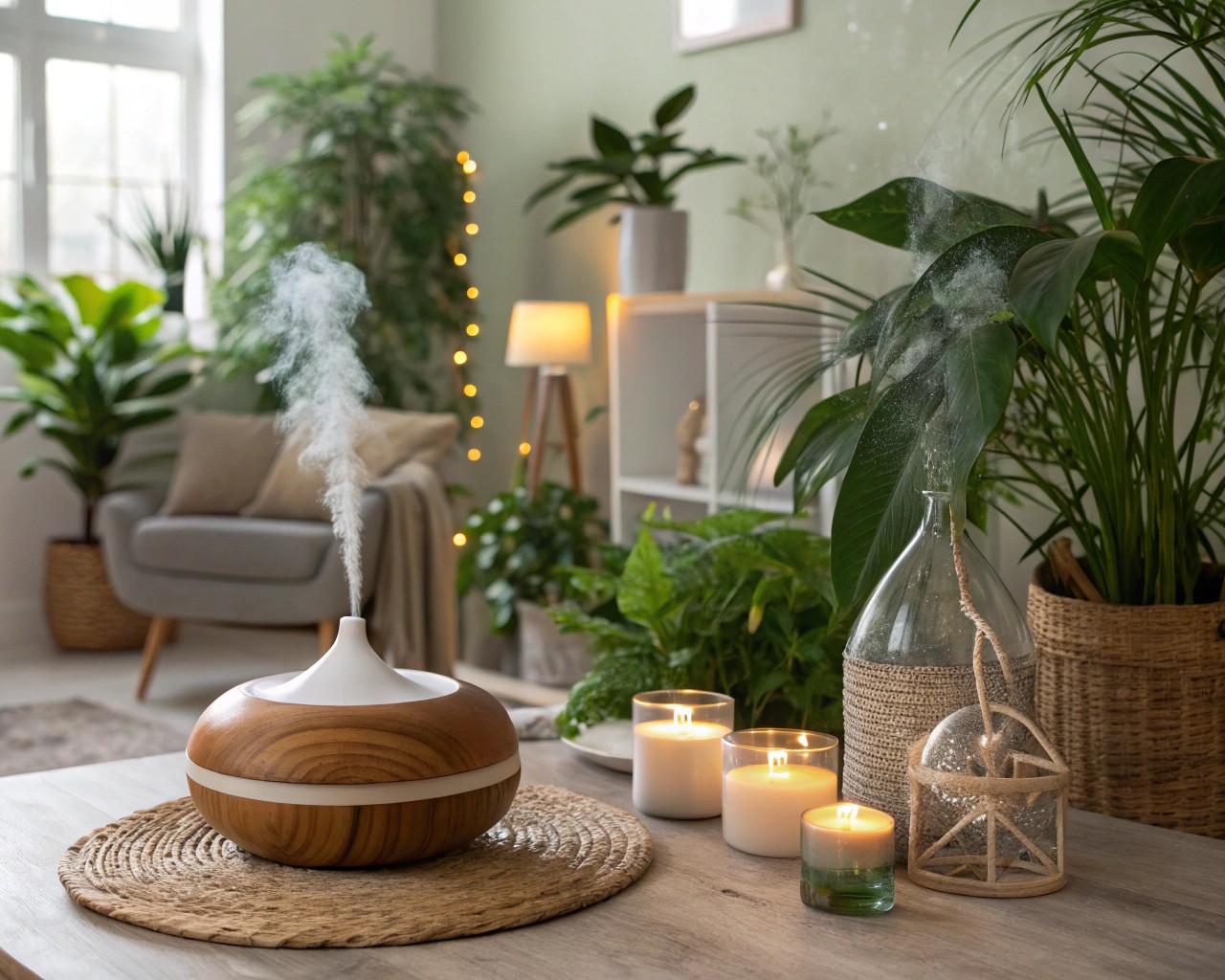
Creating Your Scent Architecture
Fragrance layering—or “scent-scaping”—involves strategically combining different fragrance formats to create depth, longevity, and complexity. This technique mirrors the principles we use in interior design: establishing a foundation, building layers, and adding accent pieces.
The Three-Layer System:
- Base Layer (Foundation): Reed diffusers or HVAC integration for consistent, subtle coverage
- Middle Layer (Impact): Scented candles or room sprays for immediate ambiance
- Top Layer (Accent): Linen sprays, essential oil diffusers, or natural elements for personalization
Professional Layering Techniques:
- Start with lighter scents as your foundation—citrus or clean notes work exceptionally well
- Build complexity gradually by adding complementary middle notes through candles or diffusers
- Create transitions between rooms using scent bridges—complementary fragrances that ease the journey from one space to another
- Use the 30:50:20 rule when blending: 30% top notes, 50% middle notes, 20% base notes
Room-by-Room Fragrance Strategy
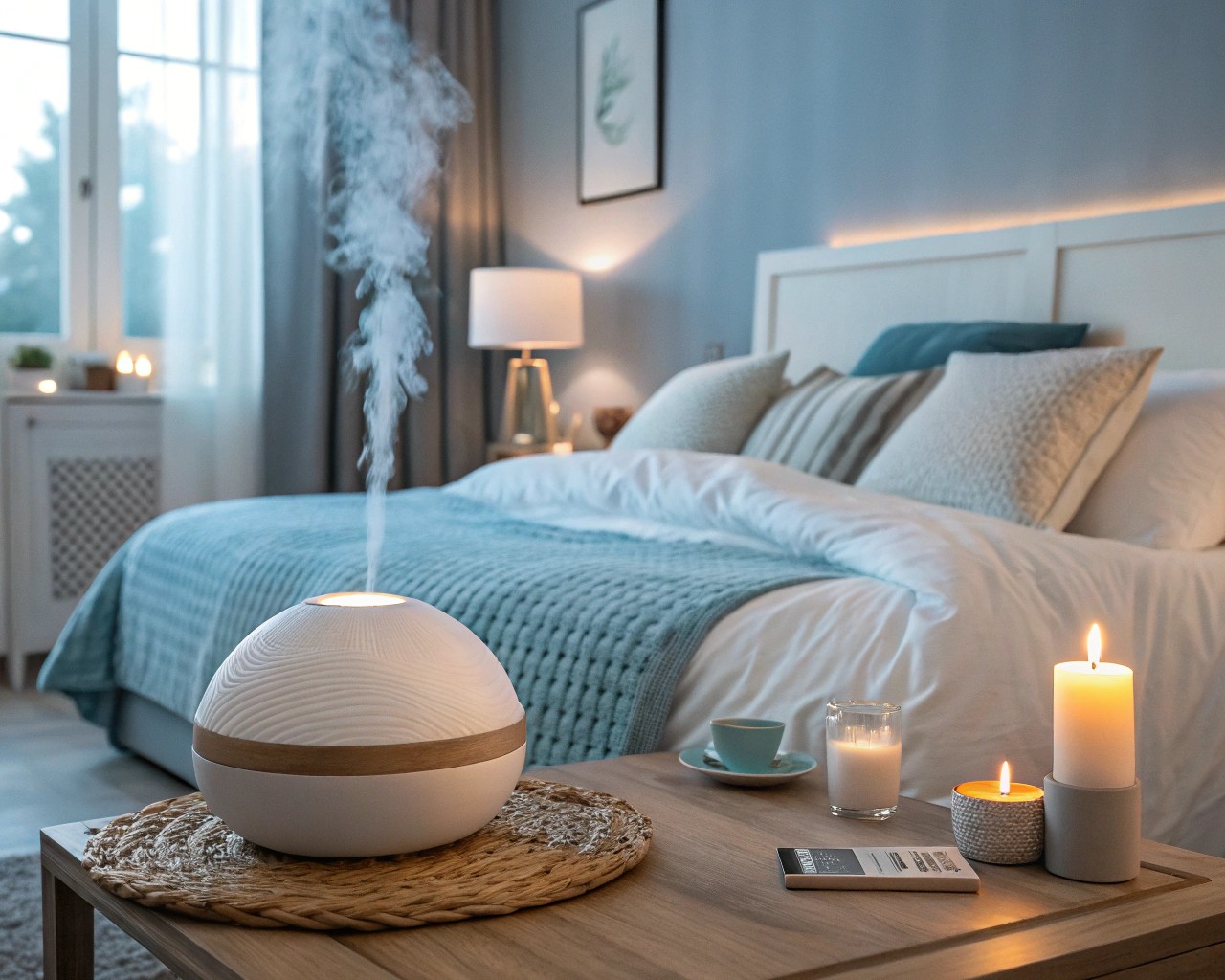
Entryway: Setting the First Impression
The entryway establishes your home’s olfactory signature. Choose clean, welcoming fragrances that aren’t overpowering:
- Light citrus blends (bergamot, lemon, grapefruit)
- Soft florals (lavender, freesia)
- Fresh linen scents
Professional Tip: Position reed diffusers on console tables at medium height for optimal diffusion, and consider motion-activated sprays for guests’ arrival.
Living Room: The Heart of Your Home
This multipurpose space requires adaptable fragrance solutions:
Morning/Daytime: Fresh, energizing scents
– Citrus combinations with mint or basil
– Light floral blends
Evening/Entertainment: Warmer, more sophisticated notes
– Sandalwood and vanilla combinations
– Amber and woody blends
Placement Strategy: Use multiple small diffusers rather than one large source to create even distribution. Place them away from direct airflow but where warmth can help diffusion.
Bedroom: Your Personal Sanctuary
Focus on calming, sleep-promoting fragrances:
- Lavender and chamomile for relaxation
- Sandalwood and bergamot for grounding
- Vanilla and cedarwood for comfort
Application Method: Use essential oil diffusers on nightstands, but ensure they’re not too close to the bed. Linen sprays work excellently for immediate bedtime preparation.
Kitchen: Balancing Culinary Aromas
The kitchen requires scents that complement rather than compete with food aromas:
- Clean citrus notes (lemon, lime, grapefruit)
- Herbal blends (basil, rosemary, mint)
- Fresh green scents that won’t clash with cooking
Professional Approach: Use room sprays for immediate freshening after cooking, and position small reed diffusers away from cooking areas but where they can neutralize lingering odors.
Bathroom: Creating a Spa Experience
Transform your bathroom into a spa-like retreat:
- Eucalyptus and mint for invigoration
- Fresh florals like jasmine or white tea
- Clean, oceanic scents
Strategic Placement: Use humidity-resistant reed diffusers or essential oil diffusers positioned away from water sources. Consider plants like eucalyptus that naturally release fragrance when exposed to steam.
Professional Application Techniques
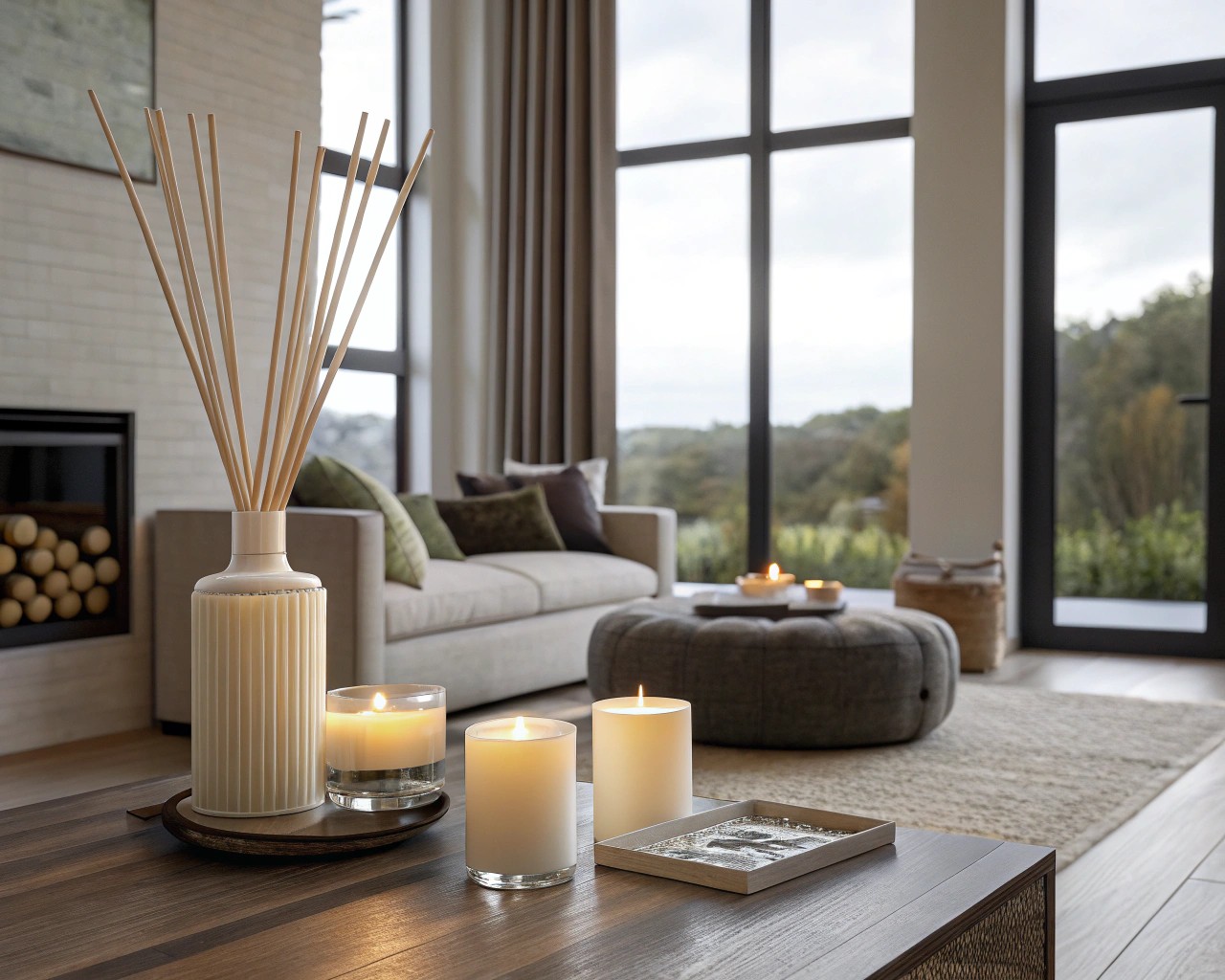
Diffusion Methods and Their Applications
| Method | Coverage | Duration | Best For |
|---|---|---|---|
| Reed Diffusers | Medium, consistent | 2-3 months | Base layer, continuous scenting |
| Essential Oil Diffusers | Adjustable intensity | 4-8 hours | Therapeutic benefits, customizable |
| Room Sprays | Immediate, targeted | 1-3 hours | Quick refreshing, layering |
| Scented Candles | Warm, atmospheric | 3-4 hours per burn | Evening ambiance, special occasions |
| HVAC Integration | Whole-home coverage | Continuous | Professional installations, luxury applications |
Optimal Placement Guidelines
- Height matters: Position diffusers at medium height (console tables, shelves) for best circulation
- Air circulation: Place near doorways or windows where natural air movement helps diffusion
- Heat sources: Utilize warm areas (near heating vents, sunny windows) to enhance natural diffusion
- Avoid interference: Keep away from strong competing scents or direct airflow that might disperse too quickly
Seasonal Scent Transitions
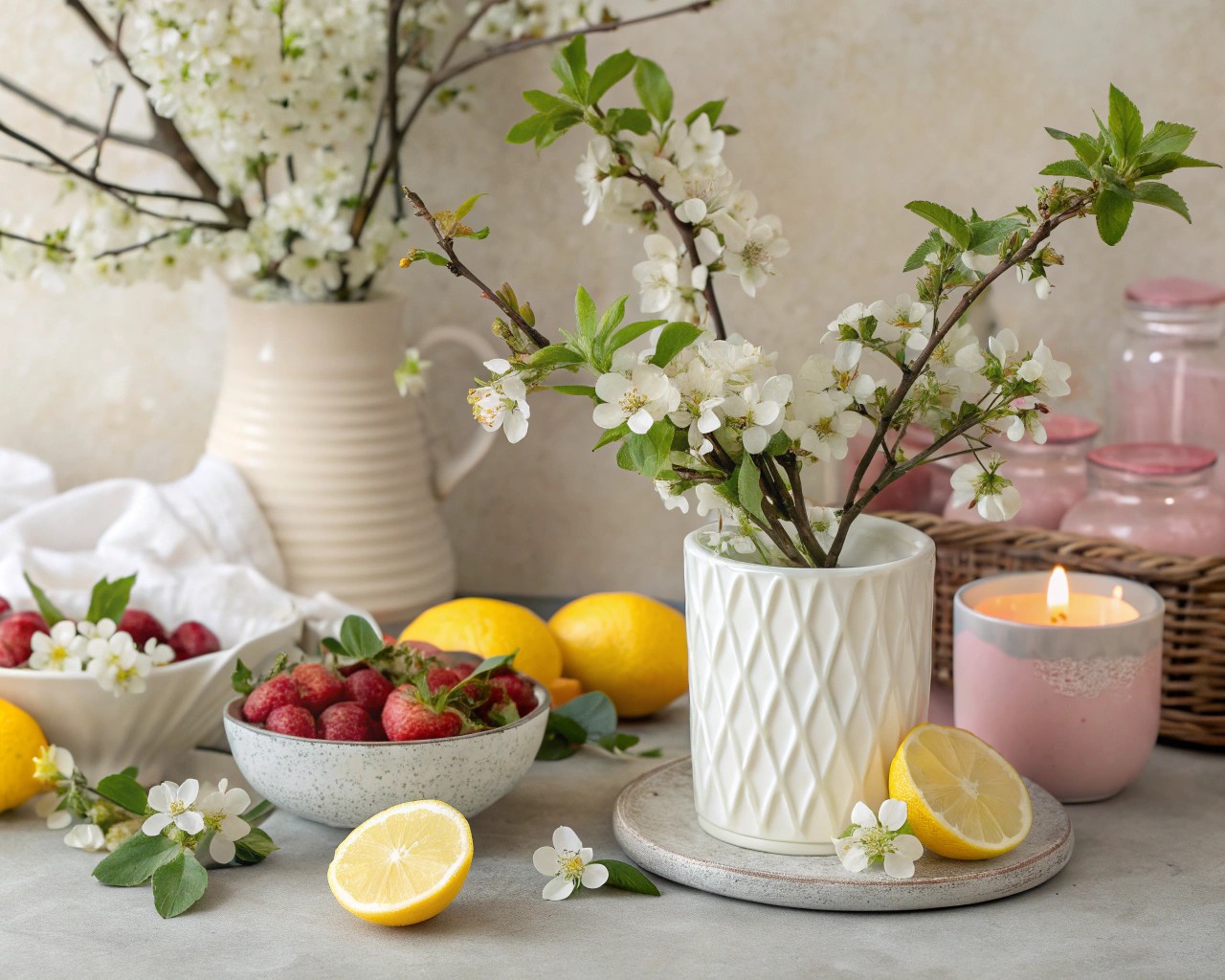
Spring: Renewal and Fresh Beginnings
– Signature notes: Neroli, lavender, citrus blossom, green herbs
– Mood: Light, fresh, awakening
– Application: Layer light florals with fresh citrus for energy
Summer: Vibrant and Energizing
– Signature notes: Citrus, mint, tropical fruits, aquatic scents
– Mood: Bright, clean, refreshing
– Application: Use cooling scents and natural elements like fresh herbs
Autumn: Grounding and Warm
– Signature notes: Cinnamon, patchouli, cedarwood, amber
– Mood: Cozy, reflective, nurturing
– Application: Transition to deeper, spicier blends that create warmth
Winter: Comfort and Luxury
– Signature notes: Sandalwood, vanilla, pine, warm spices
– Mood: Intimate, luxurious, protective
– Application: Rich, enveloping scents that create cocoon-like comfort
Safety and Health Considerations
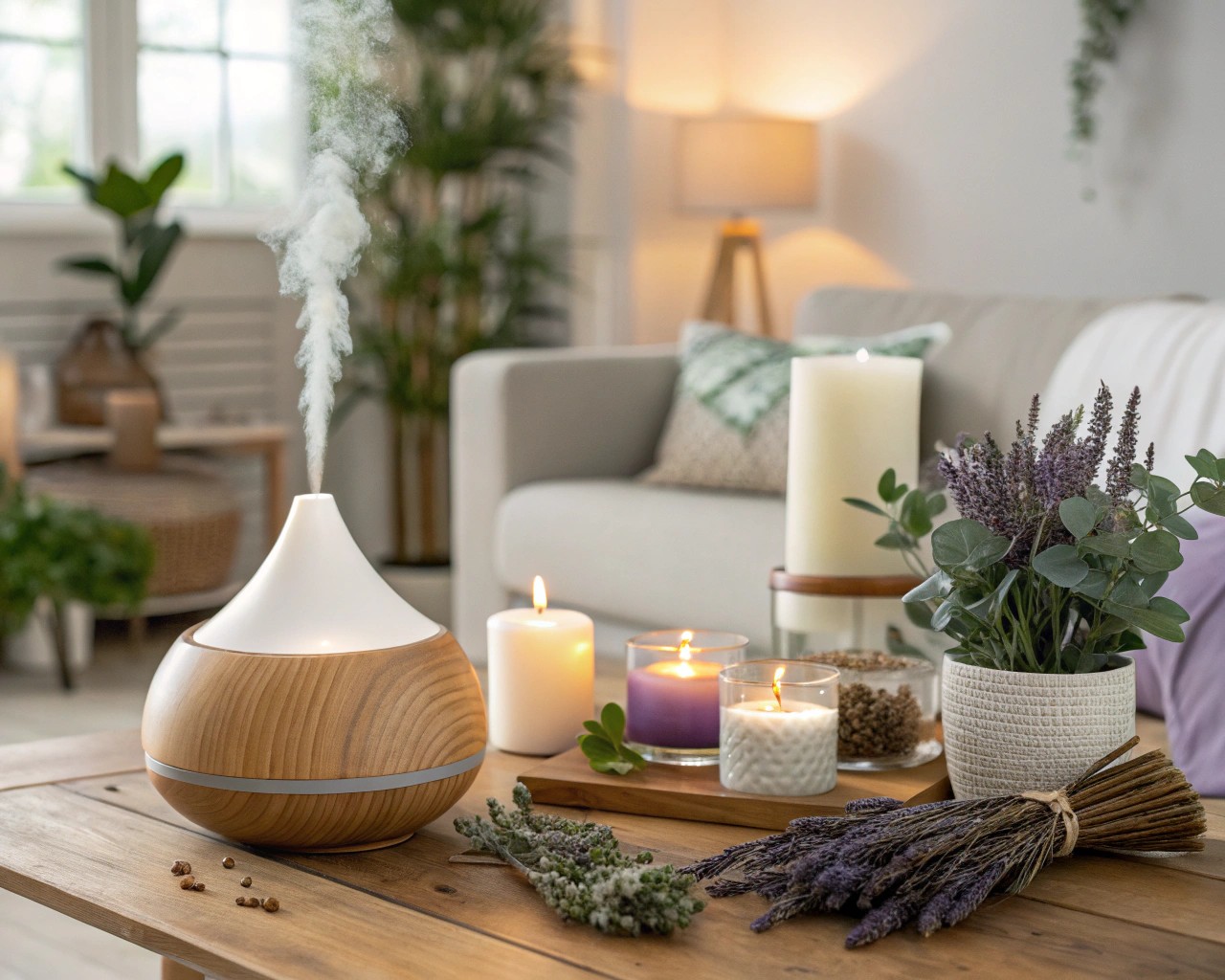
Indoor Air Quality Awareness
Recent research has highlighted important considerations about fragrance products and indoor air quality. When synthetic fragrances interact with ozone, they can create nanoparticles that may pose respiratory risks. To maintain healthy indoor environments:
- Choose natural options when possible—pure essential oils rather than synthetic fragrances
- Ensure proper ventilation in all scented spaces
- Use moderation—less is often more effective and healthier
- Avoid overwhelming combinations that might create air quality issues
Natural Alternatives and DIY Solutions
For health-conscious homeowners, consider these natural approaches:
Essential Oil Blending Recipes:
Energizing Morning Blend:
- 3 drops lemon (top note)
- 5 drops geranium (middle note)
- 2 drops cedarwood (base note)
Relaxing Evening Blend:
- 3 drops bergamot (top note)
- 5 drops lavender (middle note)
- 2 drops sandalwood (base note)
Fresh Clean Blend:
- 4 drops eucalyptus
- 4 drops lemon
- 2 drops peppermint
Creating Your Signature Home Fragrance
Developing Your Olfactory Identity
Just as you develop a design aesthetic, creating a signature home fragrance involves understanding your preferences and lifestyle:
- Assess your natural environment: Consider your home’s architecture, natural light, and existing materials
- Define your desired mood: Determine whether you want energizing, calming, or sophisticated atmospheres
- Consider your daily rhythms: Plan different scents for morning energy, afternoon focus, and evening relaxation
- Test and refine: Experiment with combinations over time, allowing scents to mature and develop
Professional Maintenance Tips
- Rotate your fragrances seasonally to prevent olfactory fatigue
- Clean diffusers regularly to prevent scent contamination
- Store oils properly in cool, dark places to maintain potency
- Document successful combinations for future reference
The art of decorating with scent transforms houses into homes by engaging our deepest emotional responses. When executed thoughtfully, fragrance layering creates invisible architecture that enhances every moment spent in your space. Remember that scent styling, like all design elements, should reflect your personality while serving the functional needs of your daily life. Start with subtle layers, pay attention to how different scents make you feel, and gradually build your olfactory environment into something uniquely yours.
Through careful selection, strategic placement, and mindful layering, you can create a home that not only looks beautiful but feels extraordinary—one breath at a time.

